
Link Pendaftaran bisa diklik dibawah ini:
Pendaftaran Presenter SNRU
Template Abstrak dapat dilihat dibawah ini:
Template Abstrak SNRU
Template Naskah Publikasi Prosiding dilihat dibawah ini:
Template Naskah Full Prosiding SNRU
Pengumuan Penelitian dan Literasi Tuesday, 9 September 2025

Link Pendaftaran bisa diklik dibawah ini:
Pendaftaran Presenter SNRU
Template Abstrak dapat dilihat dibawah ini:
Template Abstrak SNRU
Template Naskah Publikasi Prosiding dilihat dibawah ini:
Template Naskah Full Prosiding SNRU
Pengumuan Penelitian dan Literasi Monday, 25 August 2025

Lampiran surat bisa didownload dibawah ini:
Surat Edaran
Format Penyusunan Luaran Penelitian (Video 3 Minute Presentation) dibawah ini:
Format Video 3MP
Format Laporan Akhir Pra-review (softfile) Penelitian Berbasis Laboratorium dibawah ini:
Format Laporan Akhir Penelitian
Format Poster dan Video Pengabdian (7-10 menit) dibawah ini:
Format Poster & Video pengabdian
Format Laporan Akhir Pra-review (softfile) Pengabdian Berbasis Laboratorium dibawah ini:
read more
berita penelitian dan publikasi Thursday, 31 July 2025

Abstract
Mangrove forests play an important role in climate change mitigation and have attracted significant attention from scholars, governments, businesses, and non-governmental organizations. Therefore, this study aims to (1) describe land cover changes caused by rehabilitation activities and (2) investigate the dominant factors affecting mangrove improvement through rehabilitation activities. Land cover changes were monitored using Landsat 5 TM, Landsat 7 ETM+, read more
berita penelitian dan publikasi Saturday, 26 July 2025
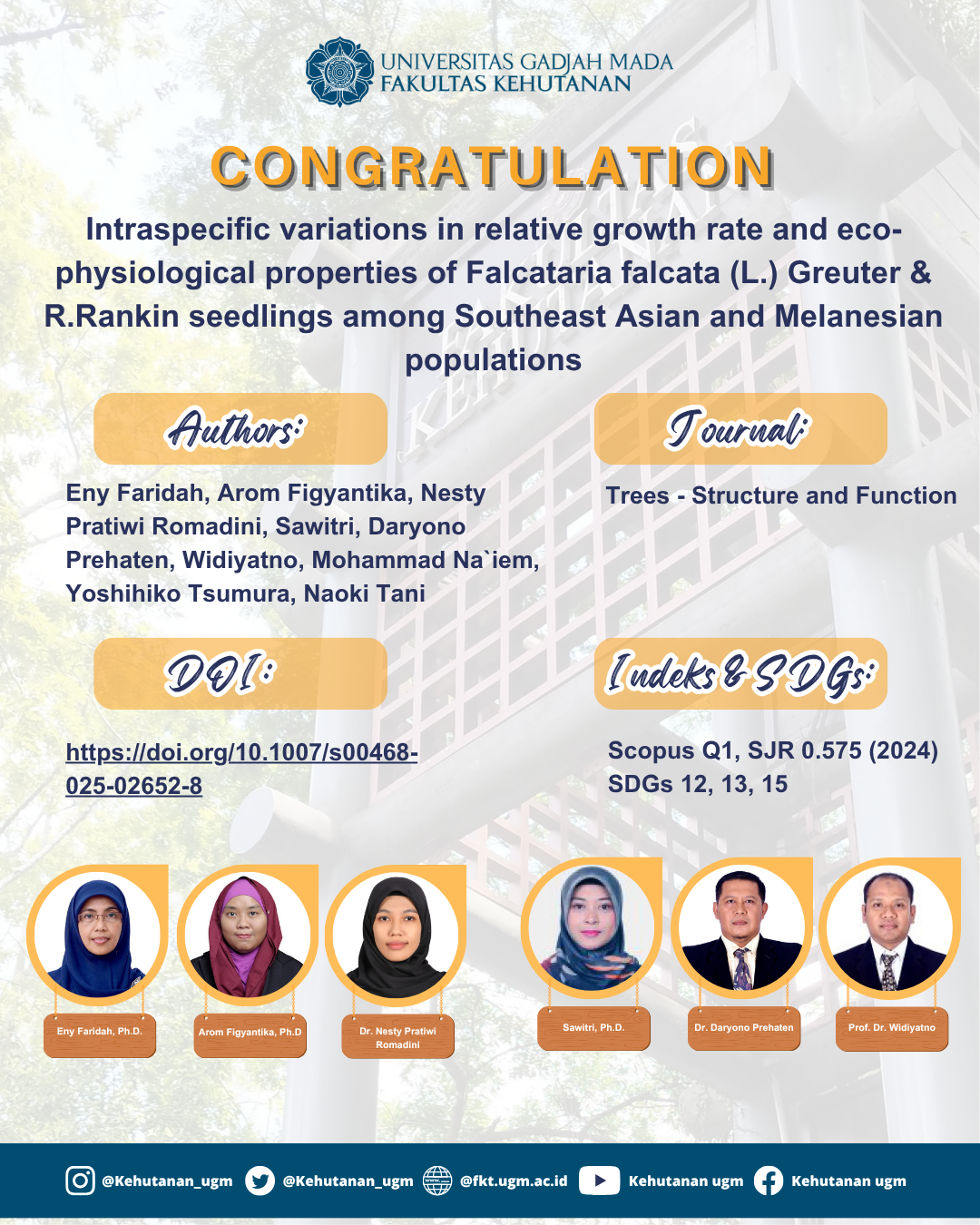
Abstract
The increased demand for lightweight wood products requires genetic improvements in the growth, wood properties, and stress tolerance of fast-growing timber species. Falcataria falcata (Leguminosae) is one of the fastest-growing trees worldwide and an important multipurpose plantation species. This species is distributed across various geological locations in Southeastern Asia and Melanesia; therefore, populations from different regions may show phenotypic read more
berita penelitian dan publikasi Friday, 25 July 2025
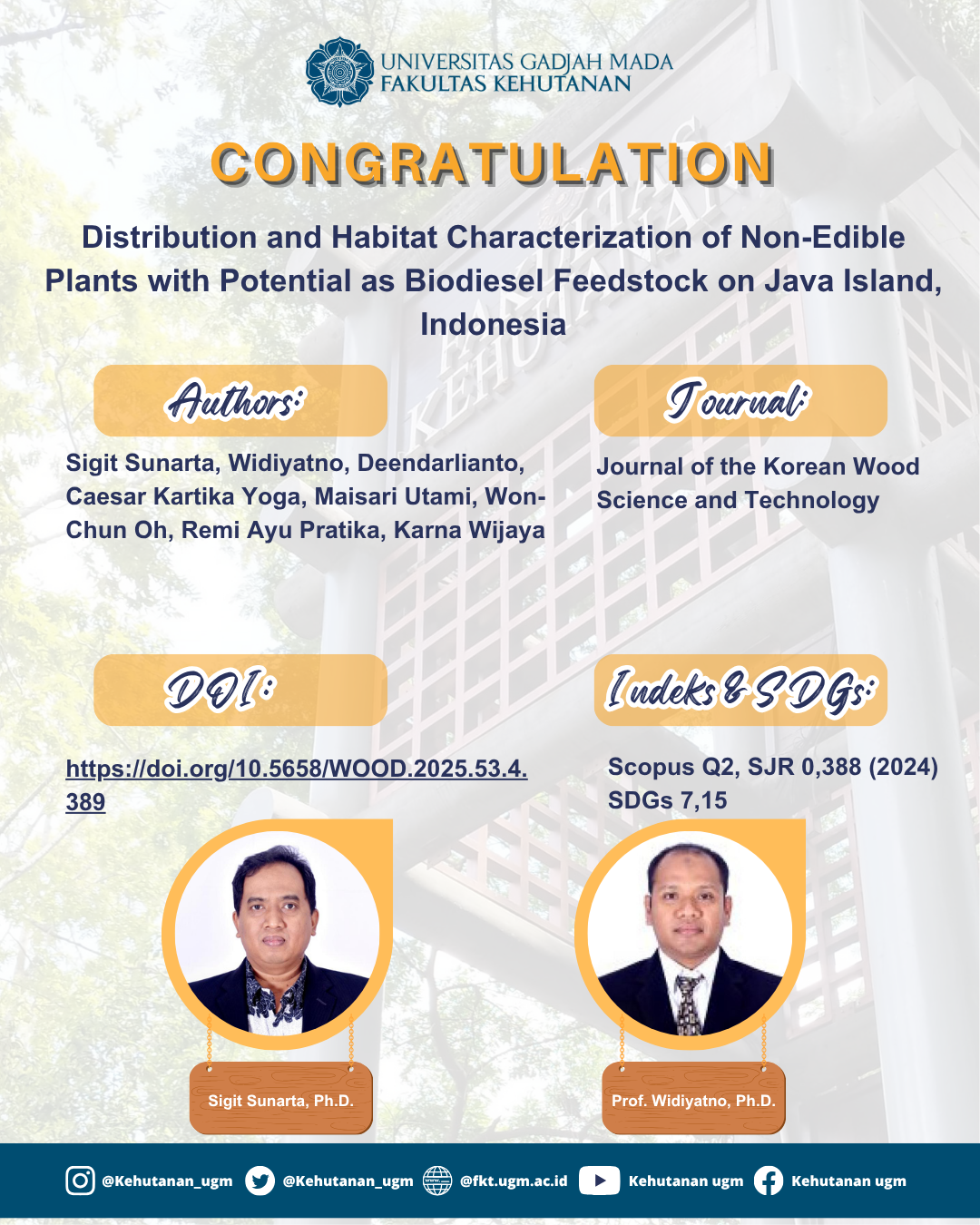
Abstract
Global warming, a critical component of climate change, refers to an increase in average temperatures across the atmosphere, oceans, and land. Global warming is primarily caused by the accumulation of greenhouse gases. As an archipelagic nation, Indonesia plays a critical role in mitigating climate change, as outlined in its Nationally Determined Contribution. The Indonesian government announced the B40 policy, requiring a 40% palm oil blend with 60% diesel, read more
berita penelitian dan publikasi Friday, 25 July 2025

Abstract
Urbanisation alters ecological processes and reshapes biodiversity patterns, with significant implications for bird communities. This study examined avian community structure across an urban gradient in Daerah Istimewa Yogyakarta, Indonesia, by integrating field surveys with remotely sensed environmental variables. Bird species richness and composition were assessed at 300 observation points stratified by urbanisation class. Environmental predictors, including read more
berita penelitian dan publikasi Friday, 18 July 2025

Abstract
Acacia aulacocarpa A.Cunn. ex Benth is considered a potential source of fiber for the pulping and paper-making industries. This study aimed to evaluate the properties of Acacia aulacocarpa kraft pulp in relation to the presence of extractive. A separate assessment was conducted on the chemical composition and pulp properties of the sapwood and heartwood. Extractive removal was achieved with various organic solvents including n-hexane, ethanol, and hot water read more
berita penelitian dan publikasi Monday, 7 July 2025
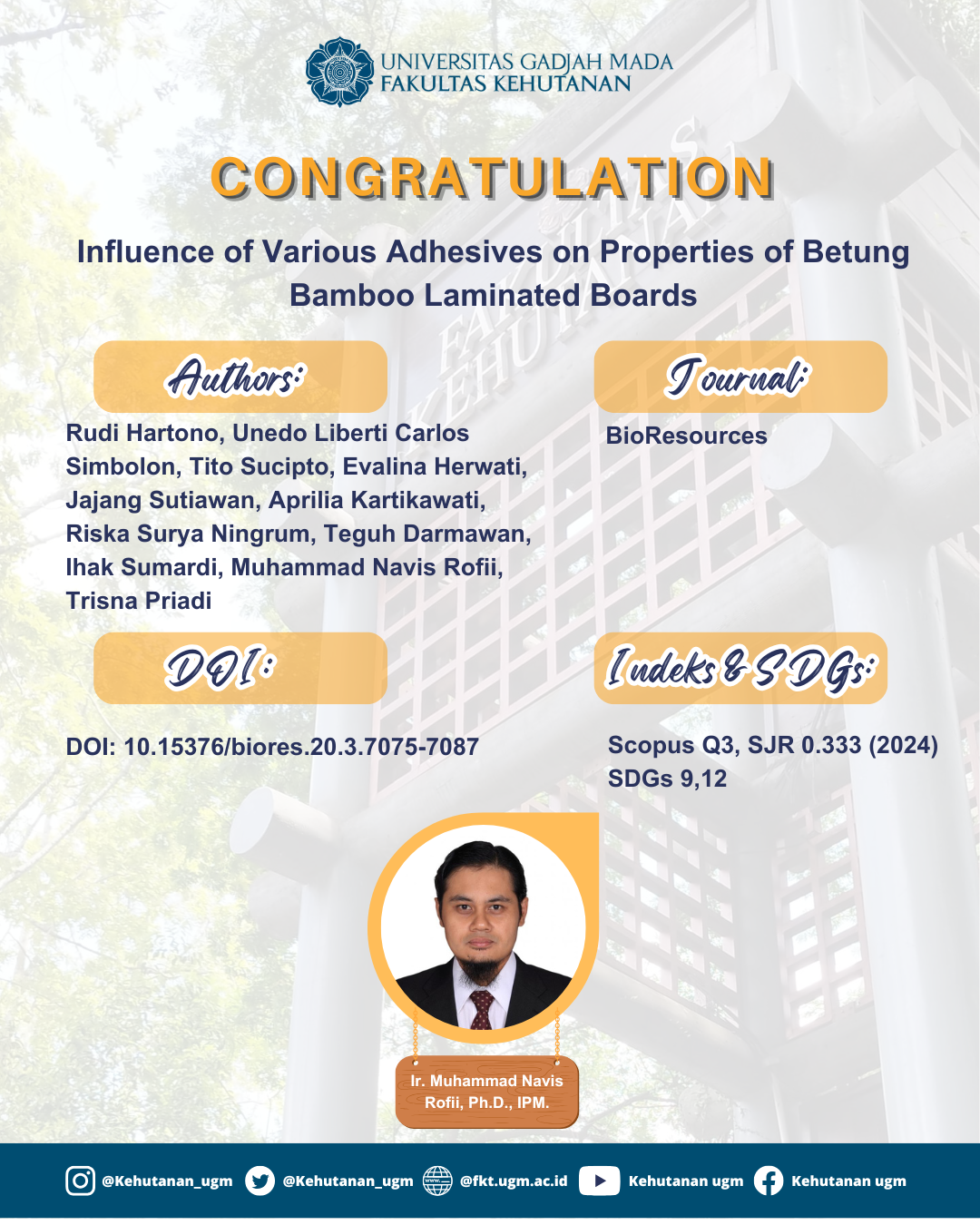
Abstract
Bamboo can be engineeredfor laminate boards and other sustainableconstruction material. The adhesive type is expected to affect the laminated board’s quality. This study analyzedthe physical (density, moisture content, and delamination) and mechanical (bending and shear strength) properties of betung(Dendrocalamus asper) bamboo laminated boards prepared using various adhesives. The most favorableadhesive for enhancing betungbamboo laminated boardswas read more
berita penelitian dan publikasi Monday, 30 June 2025
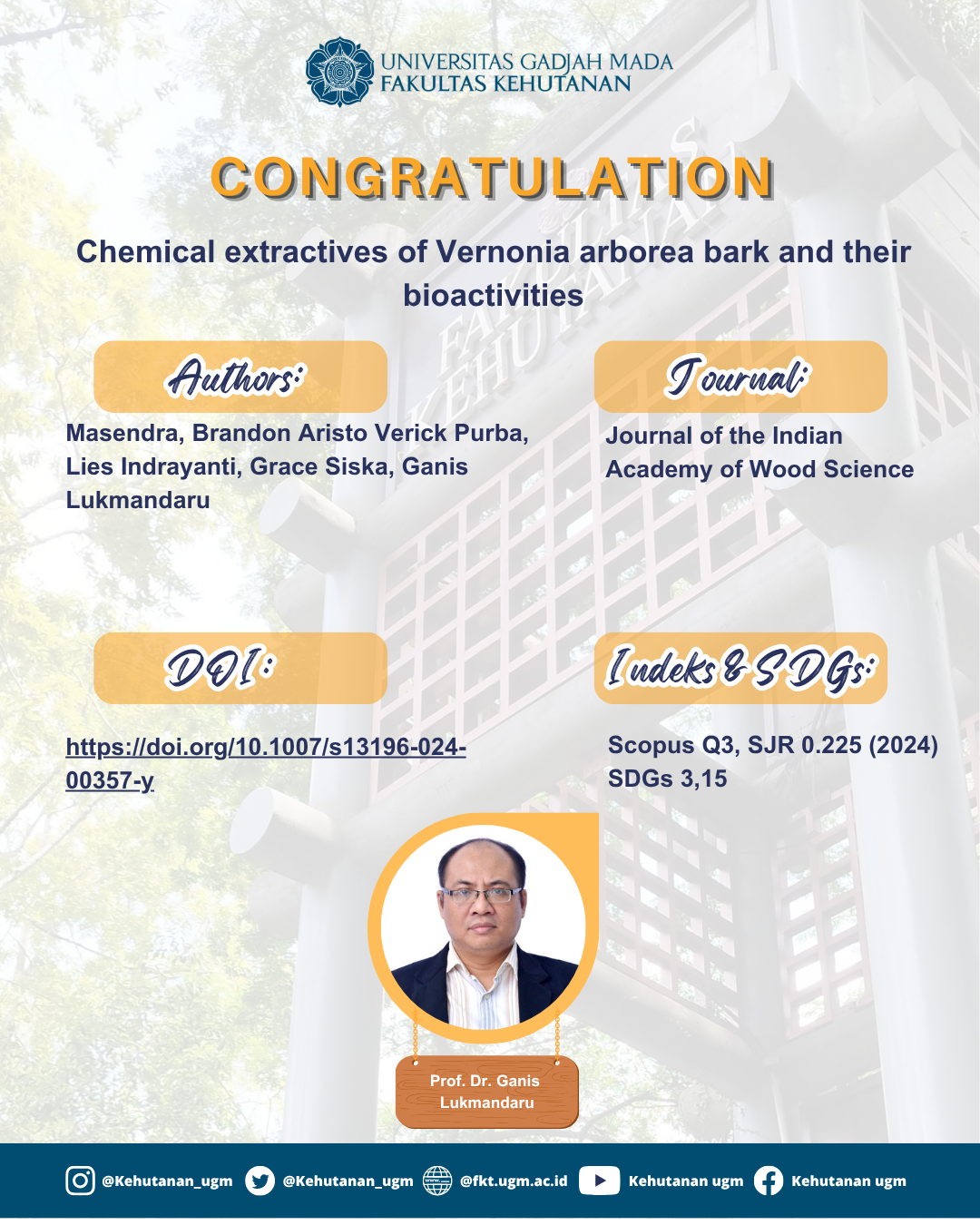
Abstract
Kawui tree or Vernonia arborea is a lesser-known woody species, originated from Kalimantan Island, Indonesia. It is one of the potential materials for pulp and paper, which produces high bark residue. Furthermore, its rich background as folklore medicines suggested the medicinal properties of V. arborea. This study aims to explore the chemical extractives of V. arborea bark and their bioactivities. The bark samples were successfully extracted using n-hexane, read more
berita penelitian dan publikasi Sunday, 29 June 2025
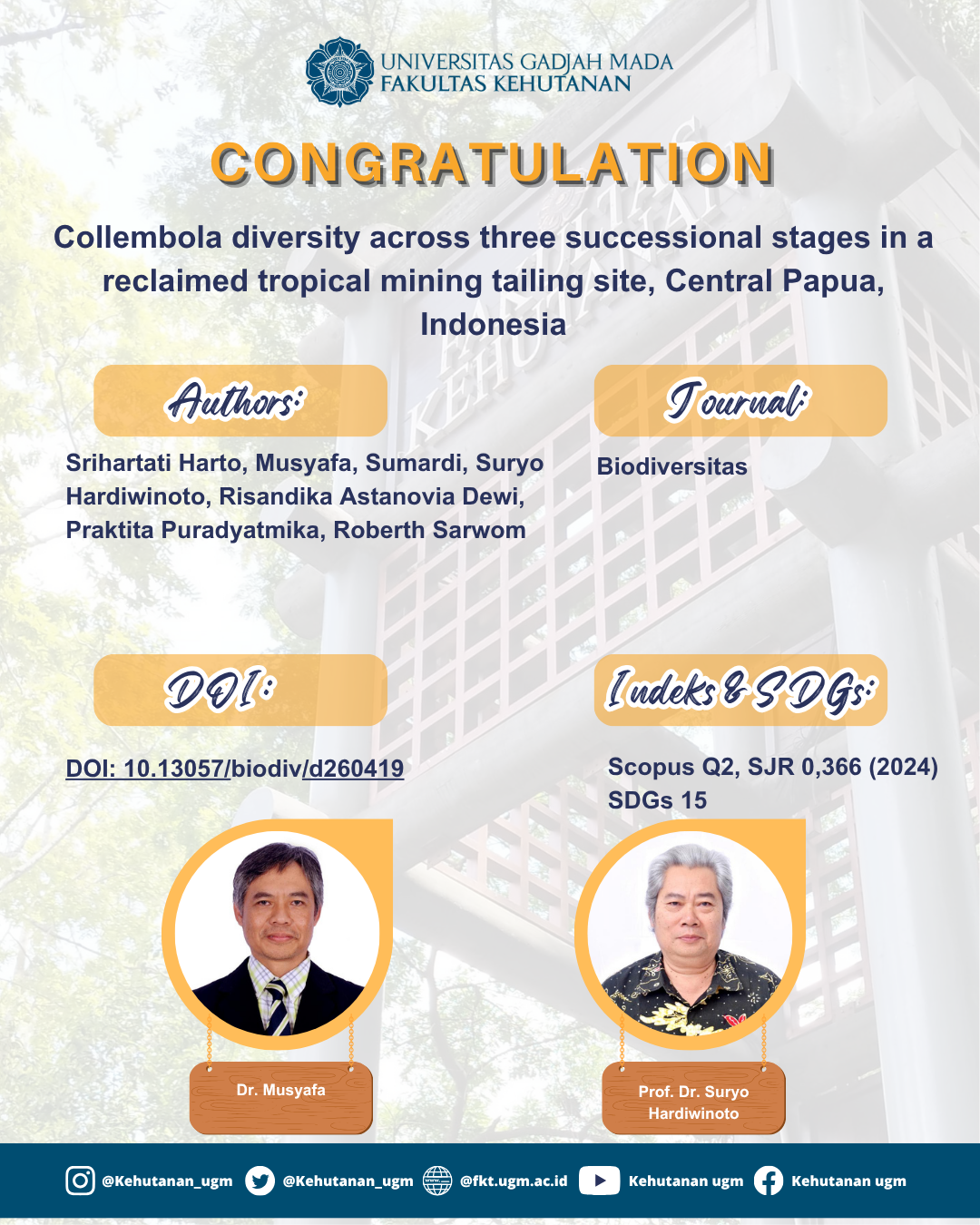
Abstract
Harto S, Musyafa, Sumardi, Hardiwinoto S, Dewi RA, Puradyatmika P, Sarwom R. 2025. Collembola diversity across three successional stages in a reclaimed tropical mining tailing site, Central Papua, Indonesia. Biodiversitas 26:2210-2220.Reclamation of tailing-impacted land by PT Freeport Indonesia aims to mitigate soil degradation and restore the underground microfaunaecosystem. Collembolas are utilized as bioindicators to evaluate reclamation read more